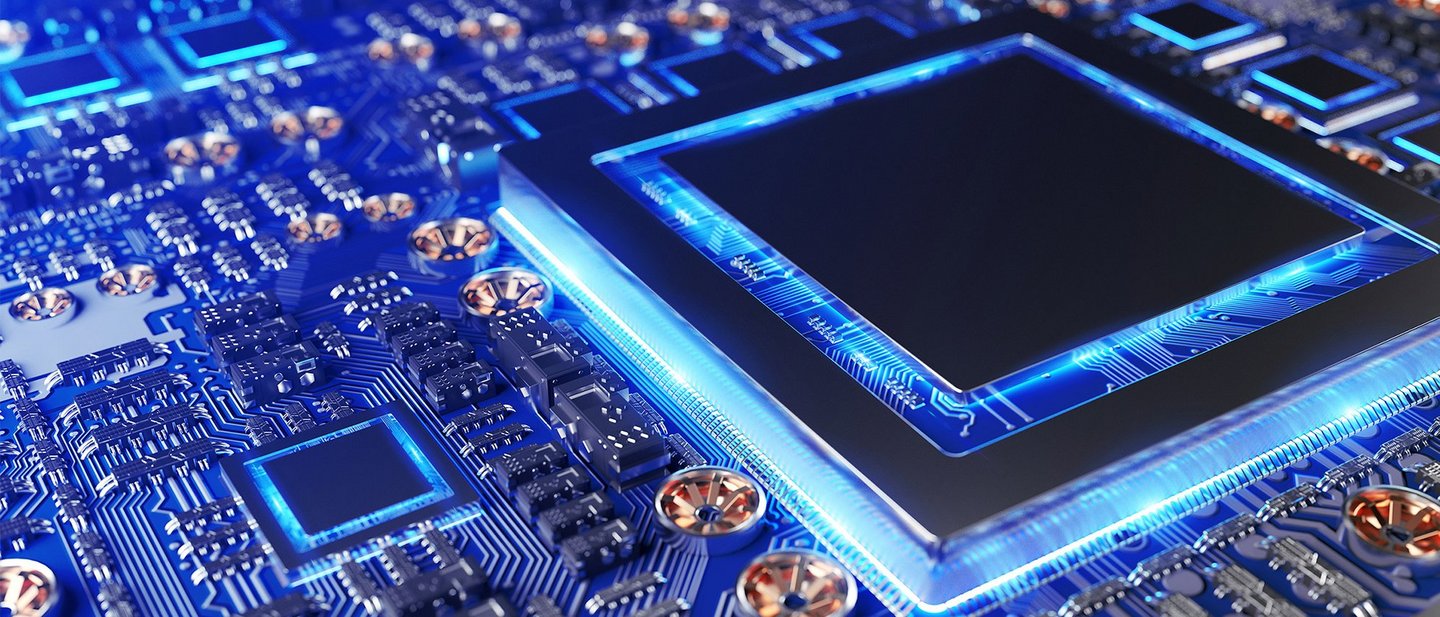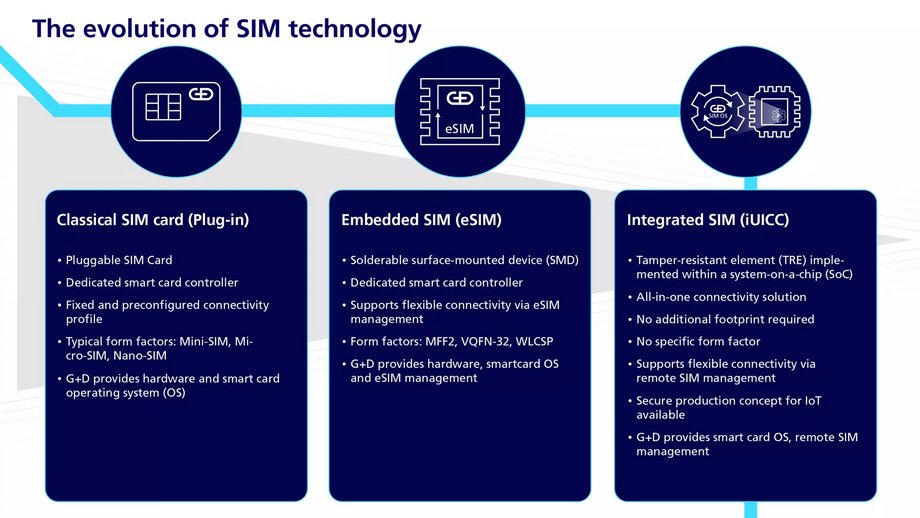Three decades ago, G+D delivered the world’s first commercial SIM card to a Finnish telecommunications customer. Over the past 30 years, connectivity has advanced at an unprecedented rate, and SIM technology has become increasingly important as people, devices, and machines become ever more connected via the Internet of Things (IoT).

What you need to know about the iSIM
Integrated SIMs (iSIMs), are set to revolutionize the Internet of Things (IoT), helping IoT devices to become more secure, increasingly flexible, and more efficient.
Advancements in the traditional SIM card led to the development of the embedded SIM, the eSIM, removing the need for physical, plastic SIM cards, and the newest generation of SIM cards, known as integrated SIMs (iSIMs) or iUICCs (integrated Universal Integrated Circuit Card chipsets). As part of the 5G evolution, communication technologies designed for IoT applications will need to offer seamless and secure connectivity. This is where iSIM technology comes in.

What does this mean for the connectivity market? Our Q&A explains the differences between iSIMs and eSIMs, and what we can expect as the IoT evolution continues.
-
What is the iSIM? How does it differ from the SIM and eSIM?
The physical SIM card, first brought to the commercial market by G+D in 1991, continues to play an important role in many consumer devices and IoT deployments, but the market is evolving rapidly. eSIM development has removed the need for a removable SIM, as the tiny chip is now embedded directly into the device, providing significant environmental benefits – and consumer benefits are greater too. Without a physical SIM card, user journeys can become fully digital and more convenient. The iSIM is a further progression in the fast-paced world of connectivity. It reduces the size and power consumption even further, and is combined with the baseband controller in a system-on-a-chip (SoC) architecture, which is embedded into the IoT device during the production process.
-
What are the benefits of iSIM technology?
The iSIM offers secure connectivity, and requires less space in the device and consumes less power than traditional SIMs. It’s an all-in-one technology for connected devices, as part of the modem chipset, with no need for an additional SIM tray or any extra components. In turn, this allows design to become more innovative. It also helps ensure a reduced footprint and enhanced sustainability as a result of less power consumption, and as it’s embedded into the hardware, it allows for lighter and smaller devices that use less (plastic) material and are less expensive to produce. Furthermore, it allows for process optimization: the personalization and the loading of required SIM credentials is performed wholly digitally during the IoT device production process.
It’s of particular interest for the hand-held and wearable device market, and for trackers and devices that require more than 10 years of battery life, such as smart electric and water meters, for instance.
-
How secure is the iSIM?
Security has always been at the heart of SIM technology, and the iSIM offers high levels of security comparable to those of the eSIM. Part of a secure module component and tamper-resistant, the chipsets have a chip-specific Root of Trust, furnished with individual keys and identities, adhering to G+D’s stringent security criteria.
-
What will the impact of iSIM technology be?
Currently, the iSIM is primarily used in low-power, wide-area networks (LPWANs), but will also expand to high-speed 5G applications in the future. As IoT technology advances at a mind-blowing pace, users are looking for increasingly secure and flexible solutions to expedite the future of connectivity, and to empower organizations to do even more with applications. Integrated SIMs support the security aspect of IoT, providing simpler solutions for seamless and secure connectivity.
-
Is the iSIM already on the market?
Together with Sony Semiconductor IL, G+D has developed an iSIM/iUICC solution that has been commercially available since 2021. International and commercial trials are underway, and we are well on the path to unlocking the potential of integrated SIM technology for the industry. The integrated SIM has been successfully launched to the market for smart metering, tracking, and other use cases.
What is an iSIM?
What is an iSIM? [608.90 KB]Published: 26/04/2022


